30 Spiritual Symbols From Cultures Around The World
Humans have a long list of symbols used for spirituality.
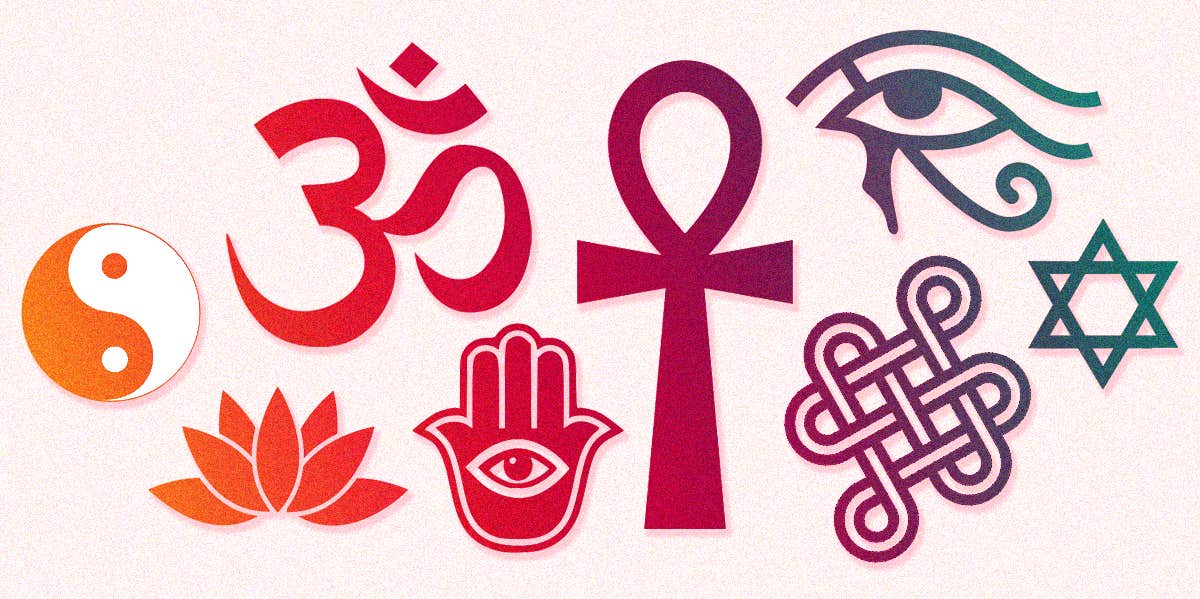 Dragana Eric, Bro Studio, Luis Line, Martial Red, Svitlana Amelina, outsideclick, Serhii Borodin / Shutterstock
Dragana Eric, Bro Studio, Luis Line, Martial Red, Svitlana Amelina, outsideclick, Serhii Borodin / Shutterstock The beauty of spirituality is that it differs from religion and transcends many different cultures. Many spiritual symbols we see come from all areas of the world and can be practiced by anyone with an open heart.
With that being said, there are many aspects of spirituality that cannot be described in words.
Symbols are the best way to communicate ideas and concepts to people who might not know or understand a certain language (or lack context). Because of this, symbols are a popular way to recognize a certain religion or philosophy.
This is so common that there are spiritual symbols we see every day and immediately recognize what they represent.
Here is a list of spiritual symbols, along with their individual meanings and backgrounds, to help you use them in your own spiritual practices, or as a way to bring yourself a peace of mind.
30 Spiritual Symbols & Their Meanings
1. Yin and Yang
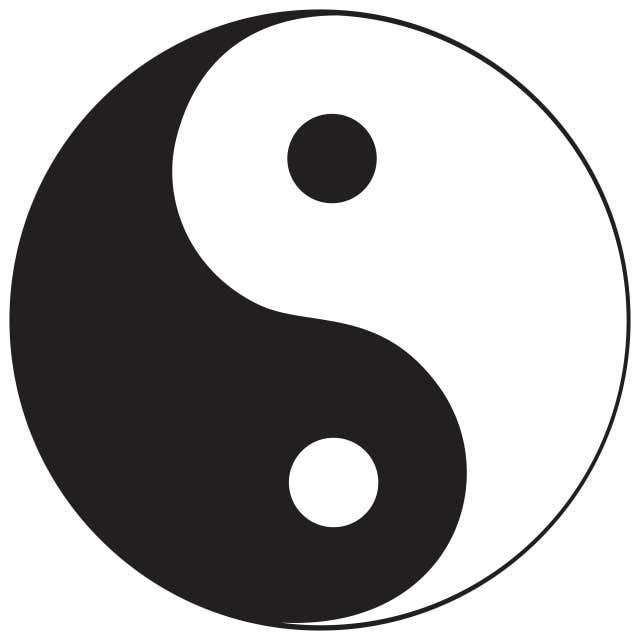 Photo: Svitlana Amelina / Shutterstock
Photo: Svitlana Amelina / Shutterstock
Origin: China
Yin & Yang is an ancient Chinese philosophy that explains the idea of dualism. Yin & Yang represents harmony and the balance of two opposing forces. This is applied to aspects of life that are different but cannot exist outside of each other.
A few examples of this concept are the difference between good and evil, or masculine and feminine. Even though good and evil are completely opposite, one cannot exist without the other because there is a small part of the good in something bad, and vice versa.
This is why the symbol uses the color white and black to convey dualism, while putting white on the black side and black on the white side.
2. Hamsa
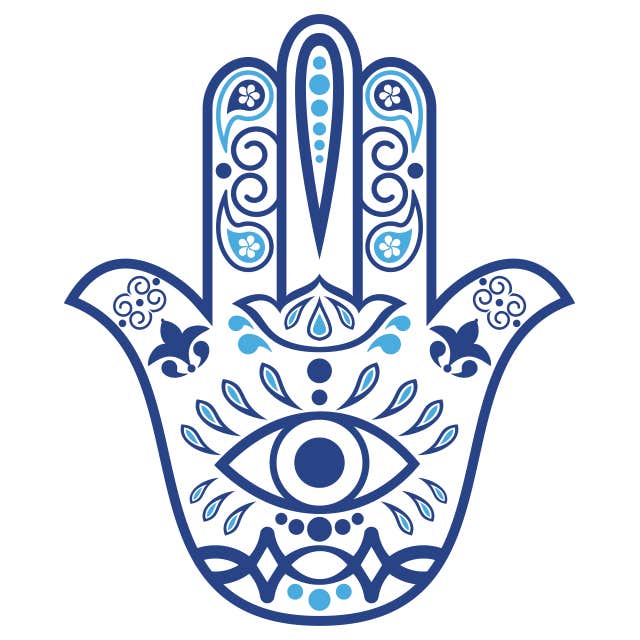 Photo: Tatiana Shepeleva / Shutterstock
Photo: Tatiana Shepeleva / Shutterstock
Origin: Middle East
The Hamsa is a Middle Eastern symbol that represents protection. The actual symbol is meant to resemble the Hand of God.
This symbol is also seen as an attribute of good luck that can bring success, power, and love.
3. Star of David
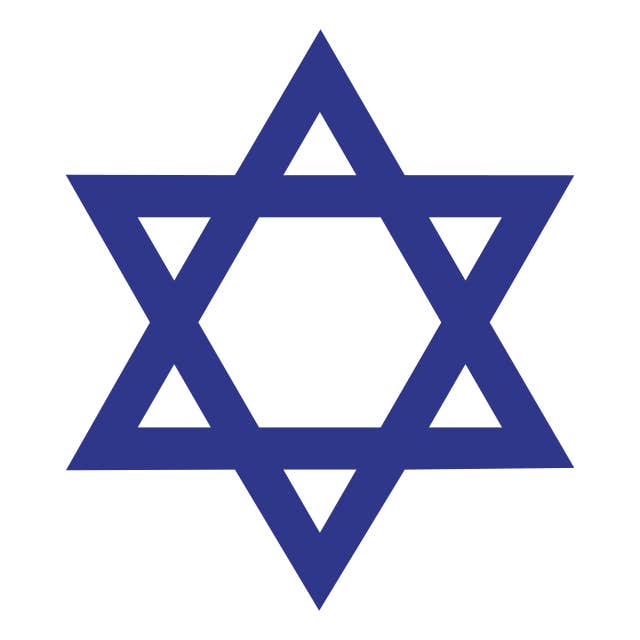 Photo: Dragana Eric / Shutterstock
Photo: Dragana Eric / Shutterstock
Origin: Hebrew
The Star of David is a Hebrew symbol associated with Judaism. The physical symbol is shown as a hexagon star that is used to identify the Jewish identity and is also associated with the country of Israel.
It is used to symbolize the cultural and religious significance of the Judaism faith, as well as the members of the Jewish community. It is also believed that it was the shield King David used in battle.
4. Ichthys or Christian Fish
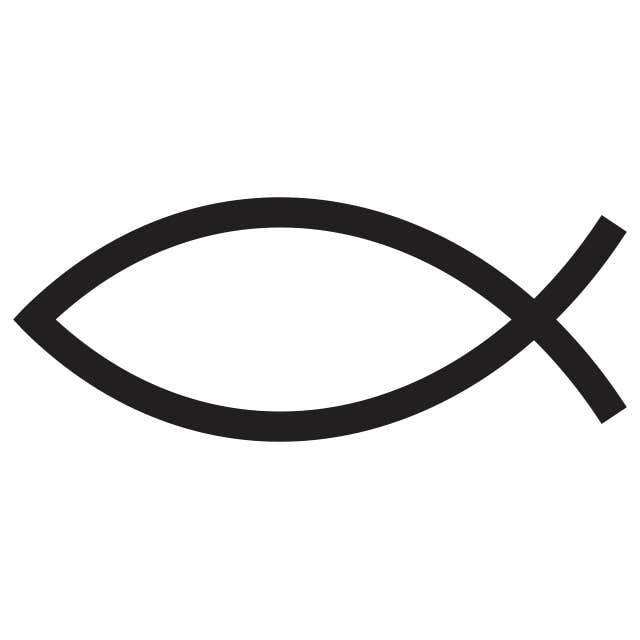 Photo: TotemArt / Shutterstock
Photo: TotemArt / Shutterstock
Origin: Christian
The Christian fish is a symbol that often represents faith, but also represents Jesus telling the Apostles that he will make them the fishers of men.
This means that the Apostles were to spread the word of Christianity everywhere they could, and is why many people of Christian faith will wear this fish symbol.
5. Lotus flower
 Photo: outsideclick / Shutterstock
Photo: outsideclick / Shutterstock
Origin: China
The lotus flower is a symbol in many Eastern religions as a sign of enlightenment. The concept of enlightenment means someone who has transcended all physical barriers of their mind in order to feed their soul. This is also seen as a rebirth.
This concept is very present in Buddhist philosophies, but the lotus flower is seen in many other Eastern ideologies.
6. Om
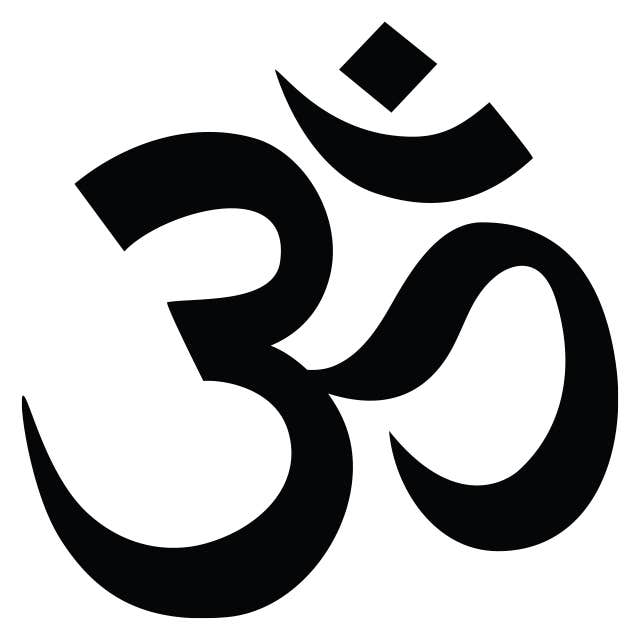 Photo: Martial Red / Shutterstock
Photo: Martial Red / Shutterstock
Origin: Hindu
Om has been referred to as "the Mother of all Mantras" due to its use across several cultures. The symbol represents the sound of creation.
It is a symbol that helps open your third eye due to its power, but the symbol also represents the blending of time (i.e., the past, present, and future).
7. Mandala
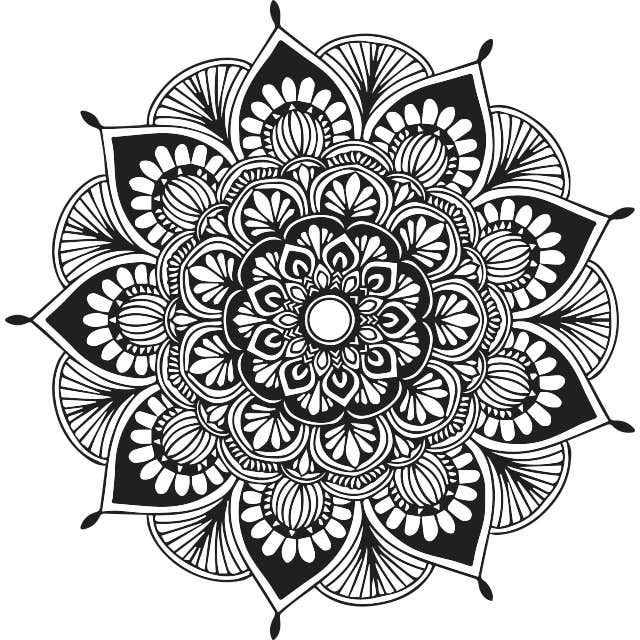 Photo: S.Noree Saisalam / Shutterstock
Photo: S.Noree Saisalam / Shutterstock
Origin: Tibet
The mandala represents the universe and is often used as a tool to help with meditation. In Tibetan Buddhism, mandalas are drawn and then destroyed to represent mortality.
8. Evil Eye
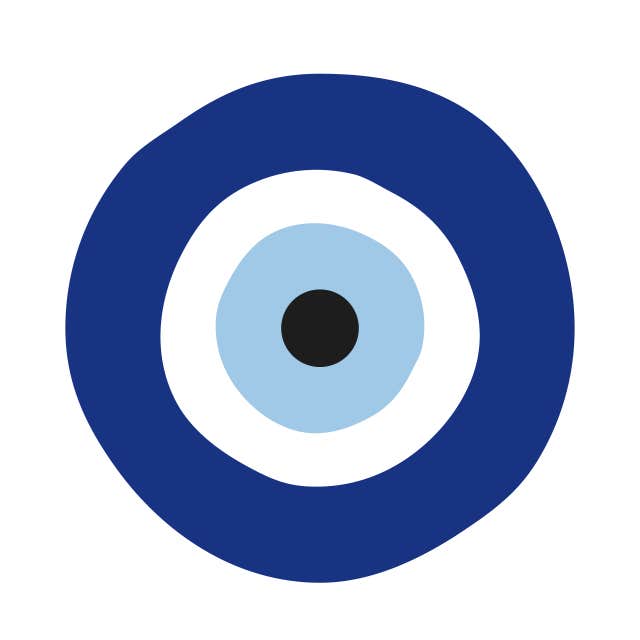 Photo: Gisele Yashar / Shutterstock
Photo: Gisele Yashar / Shutterstock
Origin: Mesopotamia
The evil eye is a belief in a curse that is brought about by a malevolent glare. The symbol is believed to bring about bad luck for whoever it is directed to.
However, when worn as a talisman, the evil eye is used to ward off curses and evil intent, in general.
9. Flower of Life
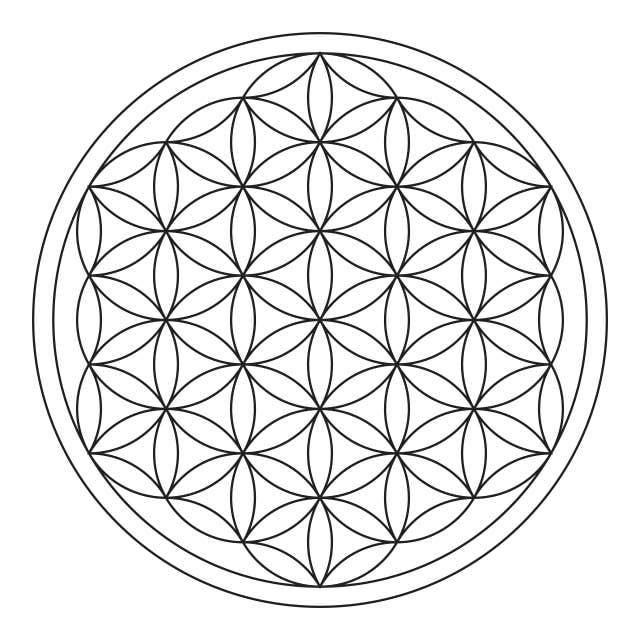 Photo: Amado Designs / Shutterstock
Photo: Amado Designs / Shutterstock
Origin: Ancient Egypt
The Flower of Life is one of the most famous symbols that uses sacred geometry within it. The symbol consists of seven overlapping geometric circles that create a hypnotic pattern.
It is used to represent the connection humanity inherently has.
10. Dharma Wheel or Dharmachakra
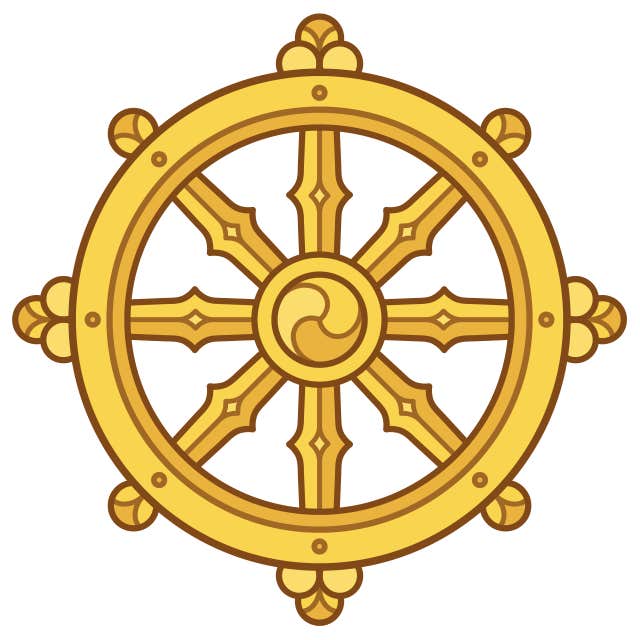 Photo: Sudowoodo / Shutterstock
Photo: Sudowoodo / Shutterstock
Origin: Buddhism
The Dharma Wheel is one of the oldest symbols used in Buddhism. The eight spokes on the wheel are supposed to represent the paths of enlightenment that will lead you to Nirvana.
Those paths include: right livelihood, right speech, right intention, right action, right efforts, right mindfulness, right consciousness, and right view.
11. Tree of Life
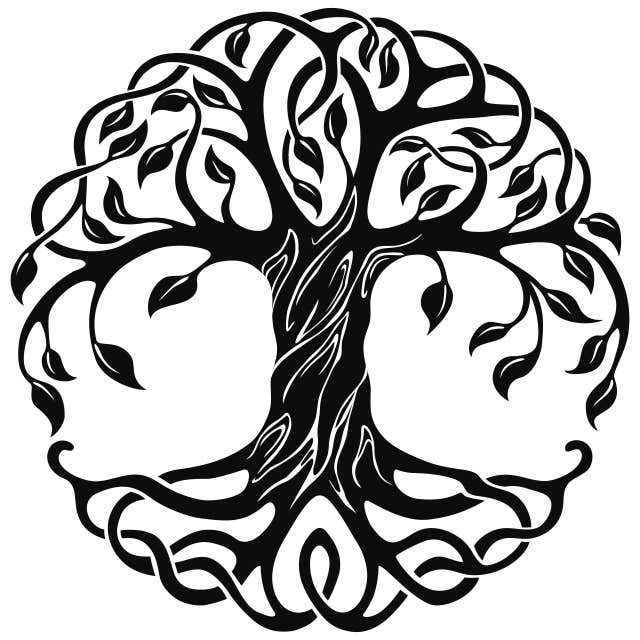 Photo: artdock / Shutterstock
Photo: artdock / Shutterstock
Origin: Ancient Egypt
Another Egyptian symbol, this one can be interpreted in many ways. The most popular is that the Tree of Life symbolizes unity.
The symbol is meant to celebrate the origin of the people and embraces diversity. Other interpretations say it represents connection and creation.
12. Ankh
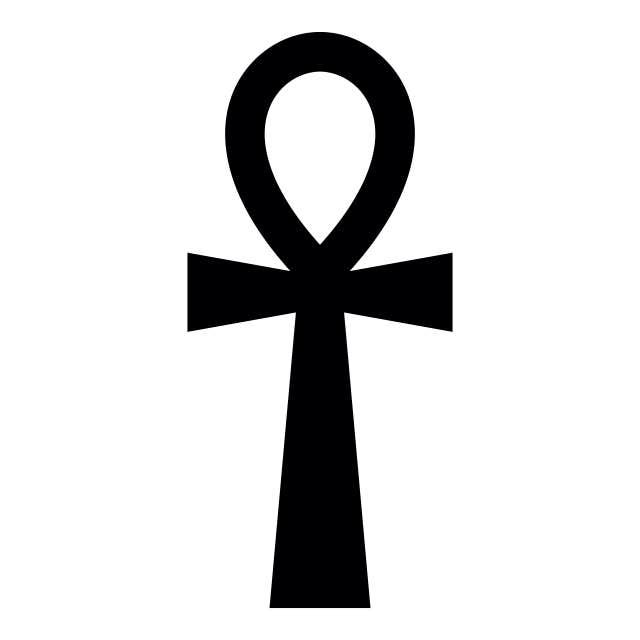 Photo: Serhii Borodin / Shutterstock
Photo: Serhii Borodin / Shutterstock
Origin: Ancient Egypt
The Ankh was believed to be the key to the afterlife in Ancient Egypt. It represents the regeneration of life through water.
Many people were buried with the symbol to grant them safe passage into the afterlife. There are even depictions of Gods carrying the Ankh.
13. Pentacle
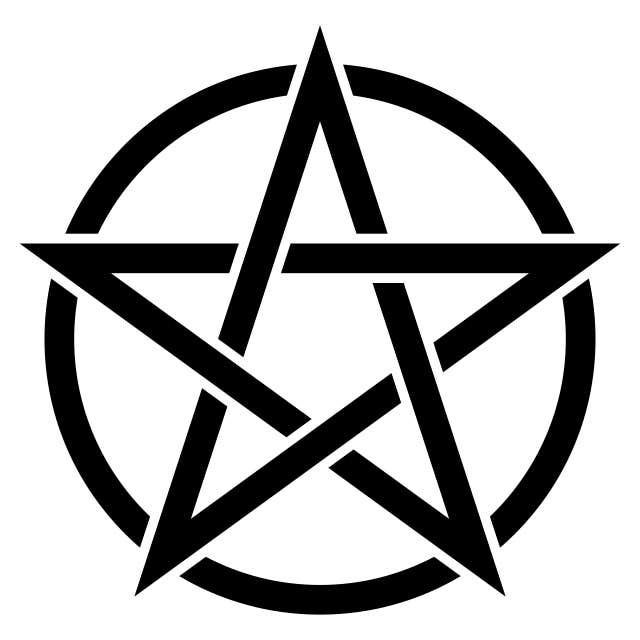 Photo: kristnu / Shutterstock
Photo: kristnu / Shutterstock
Origin: Mesopotamia
Though the pentacle is often associated with demonic and Satanic rituals, the symbol itself isn't evil. The symbol is actually used for protection and is believed to ward off evil.
The symbol is used in the Wiccan religion and is worn during evacuation ceremonies.
14. The Eye of Horus
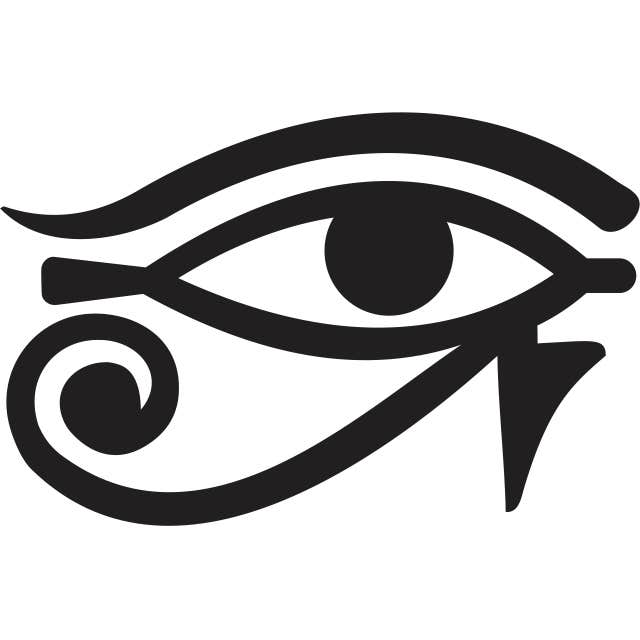 Photo: Miceking / Shutterstock
Photo: Miceking / Shutterstock
Origin: Ancient Egypt
This Ancient Egyptian symbol represents healing and comes from an old myth.
Horus was the god of the sun and moon who lost his eye in a battle with Seth. His eye was then restored by Thoth, the God of wisdom. Thus, the eye represents healing.
Many wear this in an amulet to bestow health, safety, and wisdom on them.
15. Wadjet
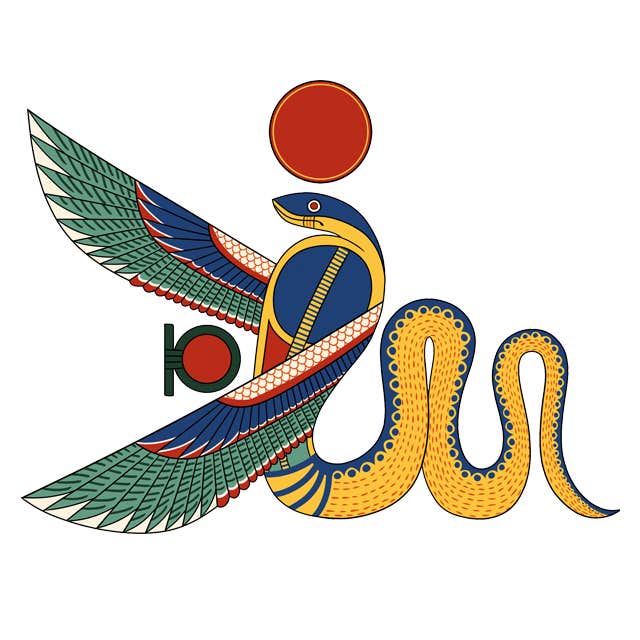 Photo: Wikipedia
Photo: Wikipedia
Origin: Ancient Egypt
Wadjet was an Egyptian deity that was depicted as a cobra with wings. She represented the monarchy and provided protection. Wadjet was meant to protect the pharaoh at all costs, killing his enemies.
16. Bodhi Leaf
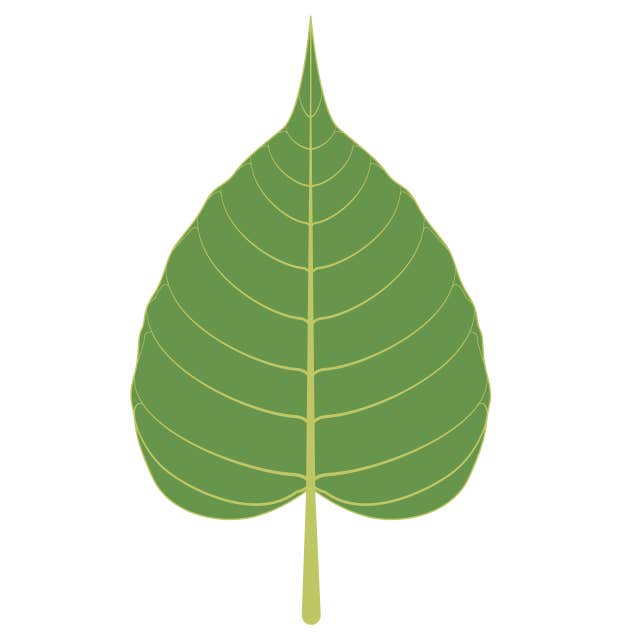 Photo: LANGSY VLK / Shutterstock
Photo: LANGSY VLK / Shutterstock
Origin: India
The Bodhi Leaf represents a spiritual awakening. This comes from the story of the Buddha who had given up all of his "princely pleasures" and found spiritual enlightenment under a Bodhi tree.
The symbol also shows how persistence is a mandatory trait in the materialistic world. Without patience and determination, one will never find solace, which is the "end goal" in Buddhism.
17. Cross
 Photo: AZAR KARIMLI / Shutterstock
Photo: AZAR KARIMLI / Shutterstock
Origin: Europe
The cross is a symbol of the power of Jesus. It comes from the story of how Jesus died on the cross for the people's sins.
People often wear the cross to remind them of the sacrifice Jesus made for them and to worship him. You can find this symbol in any Christian building.
18. Bagua
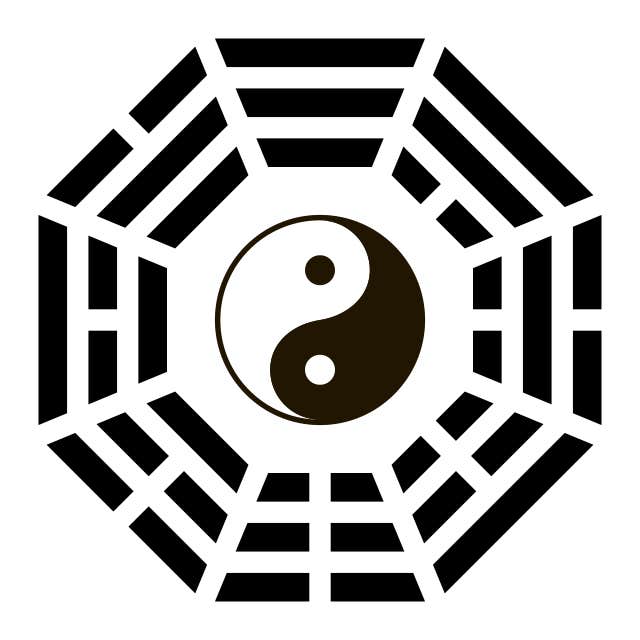 Photo: Dzm1try / Shutterstock
Photo: Dzm1try / Shutterstock
Origin: China
The Bagua represents balance — specifically, achieving balance in all aspects of your life with the use of the eight trigrams. You can use the Bagua to balance astronomy, astrology, geography, anatomy, your health, and even your family.
19. Caduceus
 Photo: octopusaga / Shutterstock
Photo: octopusaga / Shutterstock
Origin: Greece
The caduceus is the traditional symbol of Hermes, the "messenger" of the gods, as well as the god of escorting souls of the dead, wisdom, fertility, commerce, luck, eloquence, cheating, and thieving.
The Caduceus, however, has obtained a more serious meaning than just that of a Greek god. This spiritual symbol represents the primal forces of life.
Both snakes in this symbol represent masculine and feminine energies, which, when they get together, form a new life. This symbol is often used in the nursing and medical industries to represent healing.
20. Double Happiness
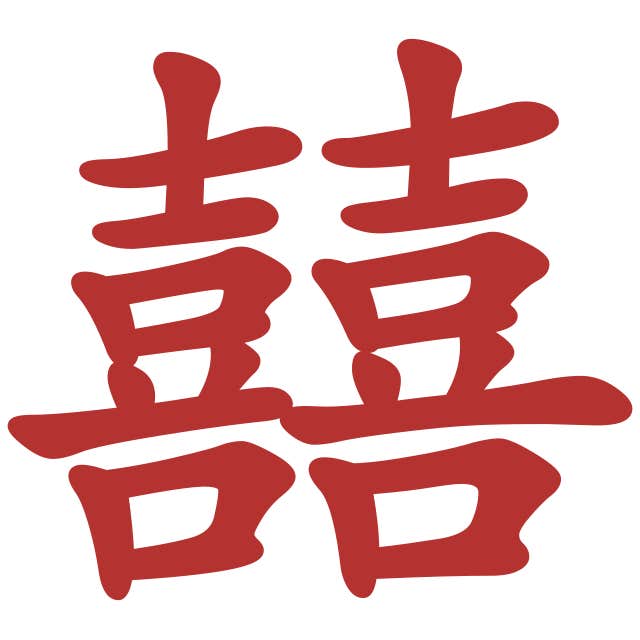 Photo: Martial Red / Shutterstock
Photo: Martial Red / Shutterstock
Origin: China
This is a huge symbol used at many Chinese wedding ceremonies due to its meaning. The symbol represents marriage, as well as a joyful, romantic relationship. It is commonly used in jewelry and decorations.
21. Peace Sign
 Photo: MeSamong / Shutterstock
Photo: MeSamong / Shutterstock
Origin: Great Britain
This symbol was created by Gerald Holtom for the British campaign for nuclear disarmament in 1958. It is supposed to represent making amends; however, it has been used on several occasions in history to give it more than one meaning.
The peace sign represents anything from calmness to feeling grounded to rational thinking. It also symbolizes being at peace with yourself, those around you, or even the world.
22. Earth Medicine Wheel or "Sacred Wheel"
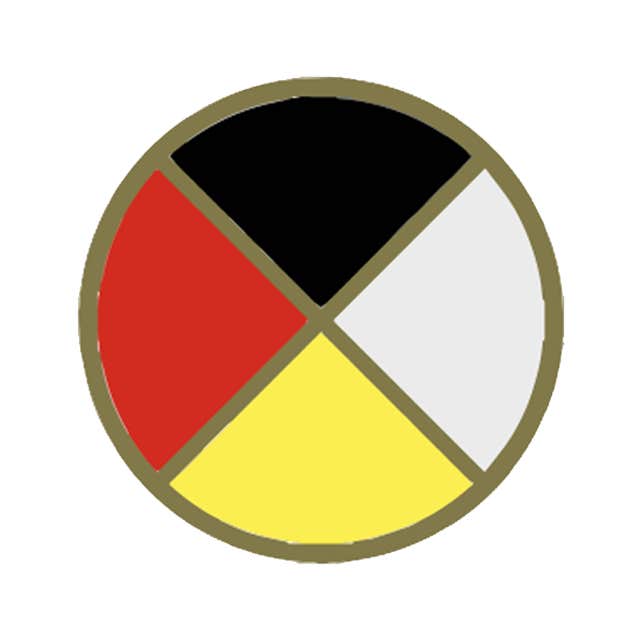 Photo: Argo Studio / Shutterstock
Photo: Argo Studio / Shutterstock
Origin: Native American
Many people use this symbol to manifest spiritual energy as well as strengthen their inner vision.
On the surface, this symbol is supposed to represent an attempt at making peace within all four elements of Earth. However, the Earth Medicine Wheel represents harmony and how it can be achieved.
23. Sri Yantra
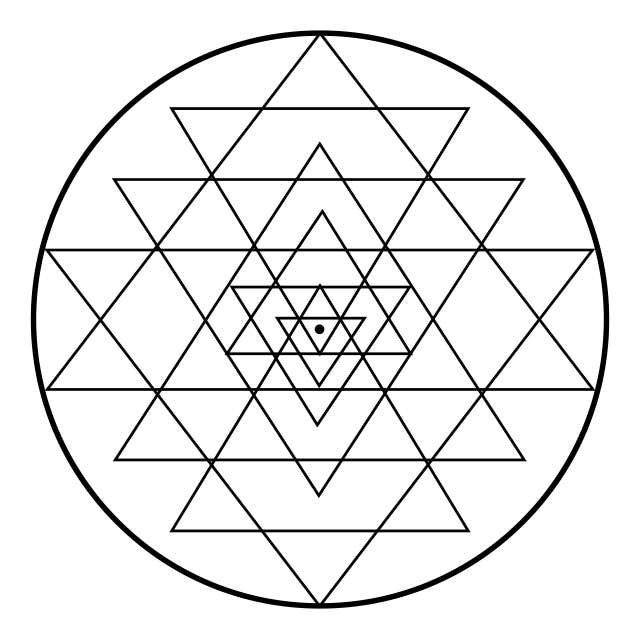 Photo: Robin.ph / Shutterstock
Photo: Robin.ph / Shutterstock
Origin: India
This symbol has been nicknamed the "King of The Yantras." The symbol consists of nine triangles that interlock with each other and a single dot in the center. The dot symbolizes where all of the creative energies once emerged, also known as Bindu.
However, that isn't the end of the power of this symbol. It also holds within it the masculine (shiva) and feminine (shakti) energies that combine to create the power of the cosmic forces and the oath of enlightenment.
24. Endless knot
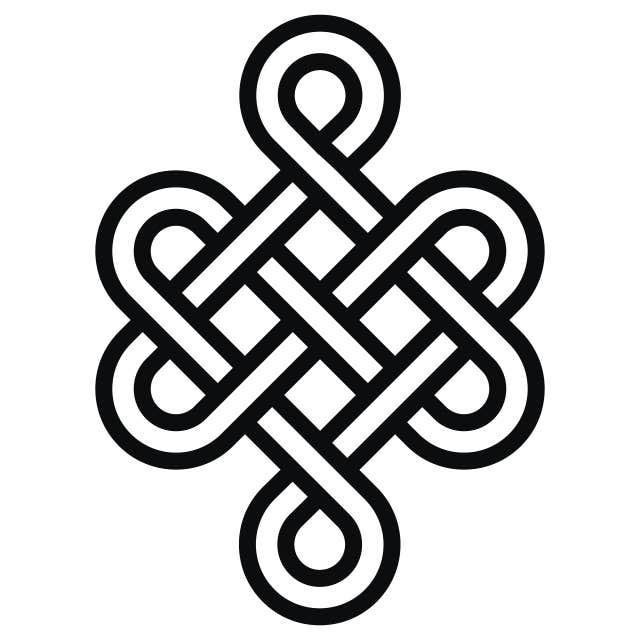 Photo: Bro Studio / Shutterstock
Photo: Bro Studio / Shutterstock
Origin: Indus Valley Civilization
The endless knot is a symbol that represents no beginning and no end but a constant cycle or flow. The symbol itself was created to show the interconnectedness of the world and how, when achieved, the world can then radiate a certain calmness or harmony.
This symbol was also used to show the endless compassion the Buddha had for people, and ended up representing the fact that earthly life is intertwined in Buddhism.
25. Gayatri Yantra
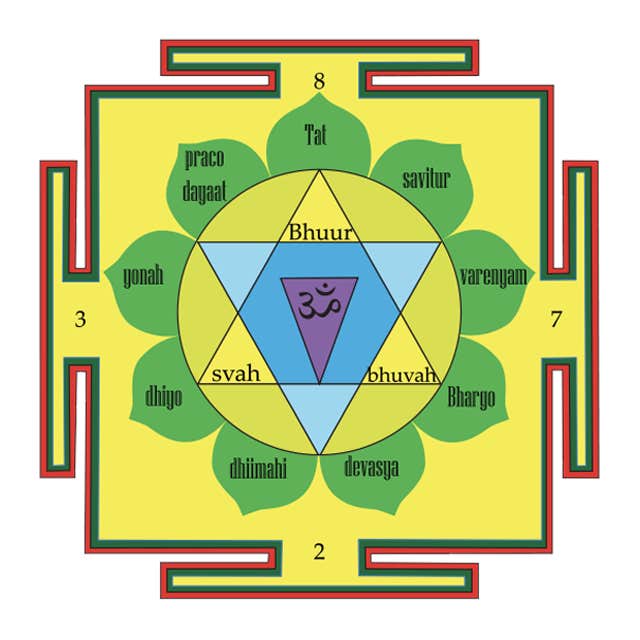 Photo: Kriszta01 / Shutterstock
Photo: Kriszta01 / Shutterstock
Origin: India, Hindu
The Gayatri Yantra represents illumination and wisdom. The symbol was apparently derived from a Hindu Goddess Gayatri and was said to remove the possibility of making the wrong choice.
Using a Gayatri Yantra will empower the truth and focus on cosmic wisdom.
26. Triple Spiral
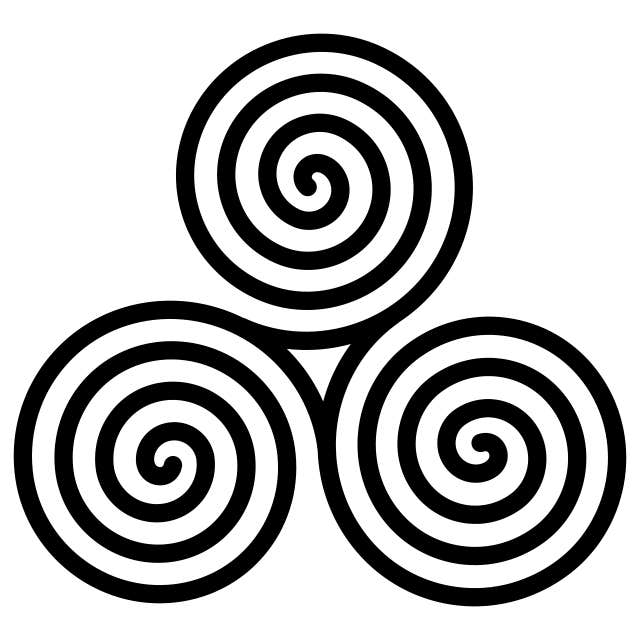 Photo: art_of_sun / Shutterstock
Photo: art_of_sun / Shutterstock
Origin: Celtic
This interesting Celtic symbol has been claimed as the Tirade or Triskele. Each spiral is meant to symbolize a part of life: earthly life, afterlife, and reincarnation.
The one line that connects all three spirals represents the passing of time.
27. Dragon
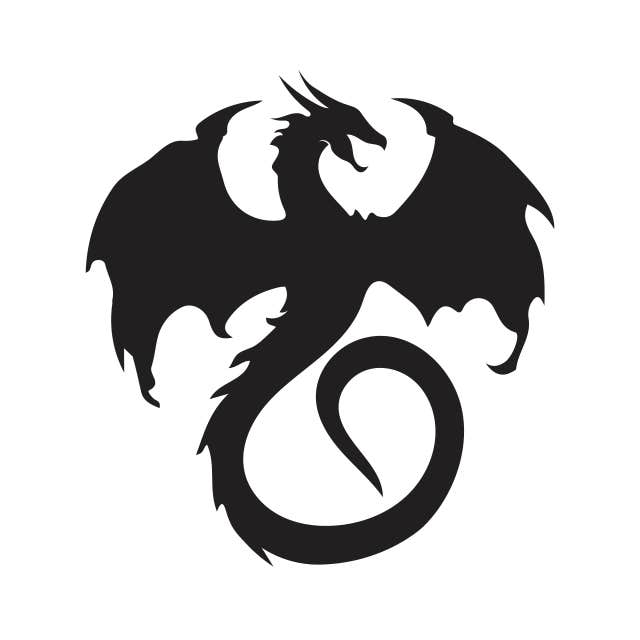 Photo: Agusgraphic / Shutterstock
Photo: Agusgraphic / Shutterstock
Origin: China
The dragon is known to be a favorite in Chinese culture. Dragons represent all bodies of water to the Chinese; however, dragons also mean good luck, strength, and health.
This sacred symbol has an air of nobility to it since there is great power associated with the dragon within the culture.
28. Khanda
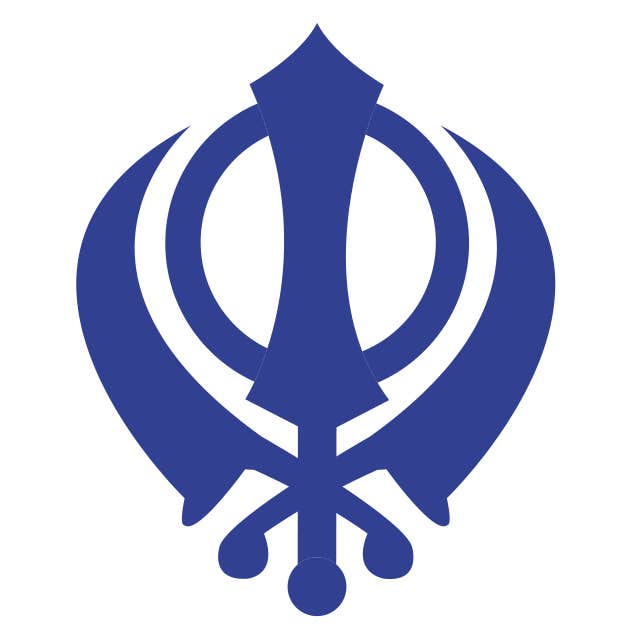 Photo: Sourabh Patiyal Designs / Shutterstock
Photo: Sourabh Patiyal Designs / Shutterstock
Origin: India, Sikhism
The Khand represents the strength of the Sikhs. This symbol is the most sacred in the Sikh community and is actually comprised of four weapons.
There are two single-edged swords crossed at the bottom, a chakkar, and a double-edged sword going through the middle. The symbol is meant to symbolize the destruction of falsehood, divine power, and spiritual and materialistic supremacy.
29. Spiral
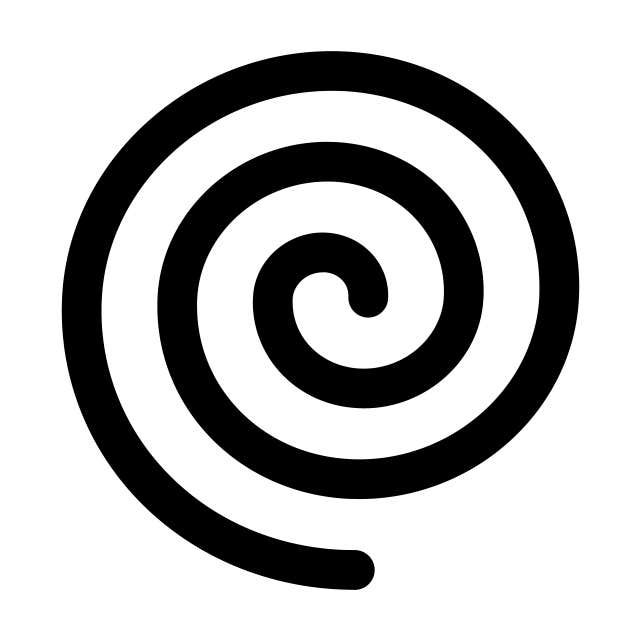 Photo: kareemov / Shutterstock
Photo: kareemov / Shutterstock
Origin: Celtic
The spiral is most commonly associated with fertility and the creation of life. The spiral is one of the world's oldest sacred symbols and represents the pattern of new growth and death.
It is a good symbol to show life's journey and is often worn as a charm to help people with life's challenges.
30. Eagle
 Photo: Jemastock / Shutterstock
Photo: Jemastock / Shutterstock
Origin: Native American
Many Native American tribes use the eagle to represent strength. They see the eagle as a ruler of the sky and as an eternal spirit.
The animal is treated with respect, and many use the symbol in tattoos to represent the highest of all things (i.e., strongest, wisest, bravest).
Maatie Kalokoh is a writer and former contributor to YourTango. She covers astrology, numerology, pop culture and relationships.
